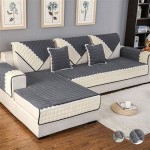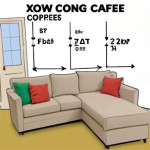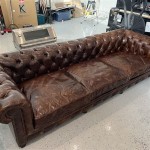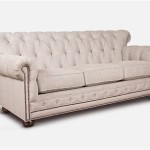Sofa Reupholstery Melbourne: A Comprehensive Guide
Sofa reupholstery in Melbourne represents a practical and aesthetically driven solution for extending the lifespan of cherished furniture. Rather than discarding a well-loved sofa due to wear and tear, or simply a desire for a new look, reupholstery offers a sustainable and often cost-effective alternative. This process involves stripping the existing upholstery from the sofa frame and replacing it with new fabric, padding, and other components, effectively restoring the piece to its former glory – or even surpassing it.
The decision to reupholster a sofa is often influenced by a variety of factors. Sentimental value connected to a particular piece, the quality of the original frame and construction, and the desire to maintain a consistent aesthetic within a home are all common motivators. Furthermore, reupholstery allows for complete customization, enabling homeowners to select fabrics, colors, and styles that perfectly complement their existing décor. In Melbourne, a city known for its diverse design sensibilities, this level of personalization is highly valued.
The process of sofa reupholstery is multifaceted, requiring specialized skills and an understanding of furniture construction. It is not simply a matter of covering a sofa with new fabric. A reputable reupholstery service in Melbourne will conduct a thorough assessment of the sofa's condition, identify any structural issues, and provide a detailed plan outlining the necessary repairs and the proposed reupholstery process.
Assessing the Suitability of Your Sofa for Reupholstery
Before committing to sofa reupholstery, a careful evaluation of the sofa's existing condition is crucial. This assessment should consider several key factors. Firstly, the frame must be structurally sound. If the frame is significantly damaged, rotted, or unstable, the cost of repair may outweigh the benefits of reupholstery. A professional assessment will identify any weaknesses in the frame and determine whether it can be adequately reinforced.
Secondly, the condition of the springs and webbing should be examined. These components provide support and comfort, and their deterioration can significantly impact the overall feel of the sofa. Sagging springs or worn webbing will need to be replaced to ensure proper support and prevent premature wear on the new upholstery.
Thirdly, consider the quality of the existing filling and padding. Over time, foam and other filling materials can become compressed, misshapen, and uncomfortable. Replacing these components with new, high-quality materials is essential for achieving a comfortable and aesthetically pleasing result. The choice of filling material will also impact the sofa's overall comfort and durability. Options include: traditional fillings such as horsehair and cotton batting, offer breathability and resilience. Modern fillings, such as high-density foam and polyester fiber, provide consistent support and are often more resistant to allergens.
Finally, the original design and construction of the sofa should be considered. Intricate designs or complex construction techniques may require specialized skills and knowledge, which could impact the cost of reupholstery. A skilled upholsterer will be able to assess the complexity of the project and provide an accurate estimate.
Selecting the Right Fabric for Your Reupholstered Sofa
The choice of fabric is arguably the most significant decision in the sofa reupholstery process. The fabric not only determines the aesthetic appeal of the sofa but also its durability, comfort, and ease of maintenance. A wide range of fabrics are available, each with its unique properties and characteristics. Understanding these differences is essential for making an informed decision that meets your specific needs and preferences.
Consider the lifestyle that your sofa needs to accommodate. If you have young children or pets, durable and stain-resistant fabrics are essential. Microfiber, canvas, and некоторых synthetic blends are excellent choices for high-traffic areas, as they are resistant to stains, scratches, and fading. These fabrics are also relatively easy to clean, which is a significant advantage for busy households.
For formal living rooms or areas where appearance is paramount, luxurious fabrics such as velvet, silk, or linen may be preferred. These fabrics offer a sophisticated look and feel, but they are generally more delicate and require more careful maintenance. Velvet, in particular, can add a touch of elegance and luxury to any room, but it is susceptible to crushing and staining. Silk is known for its lustrous sheen and luxurious drape, but it is best suited for low-traffic areas due to its delicate nature.
When selecting a fabric, consider its color, pattern, and texture. The color should complement the existing décor of the room and create the desired mood and atmosphere. Patterns can add visual interest and personality to a sofa, but it is important to choose a pattern that is not too overwhelming or distracting. Texture can also play a significant role in the overall look and feel of the sofa. A textured fabric can add depth and dimension to a room, while a smooth fabric can create a more modern and streamlined appearance.
Beyond aesthetics, durability and performance are essential considerations. The fabric's rub count, which measures its abrasion resistance, is a key indicator of its durability. A higher rub count indicates a more durable fabric that can withstand heavy use. Similarly, the fabric's resistance to fading, staining, and pilling should be considered, especially if the sofa will be exposed to direct sunlight or frequent use.
It's highly recommended to obtain fabric samples and test them in your home before making a final decision. This allows you to see how the fabric looks in different lighting conditions and to assess its texture and feel firsthand. Testing the fabric for stain resistance and cleanability can also help you make a more informed choice.
The Reupholstery Process: What to Expect
Understanding the reupholstery process provides valuable insight into the complexity and skill involved in transforming a worn sofa into a refreshed and updated piece of furniture. The process typically involves several distinct stages, starting with the removal of the old upholstery.
The initial step involves carefully stripping the existing fabric, padding, and other components from the sofa frame. This process requires precision and attention to detail, as the old upholstery often provides valuable clues about the original construction techniques and the placement of seams and fasteners. The old upholstery is carefully removed and can be used as templates for cutting the new fabric. The upholsterer will assess the condition of the frame, springs, and webbing, and make any necessary repairs or replacements.
Once the frame is prepared, the new padding and filling materials are carefully applied. This is a crucial stage in the process, as the padding and filling determine the comfort and shape of the sofa. The upholsterer will use a combination of techniques and materials to achieve the desired level of support and cushioning. This step often involves layering different materials of varying densities to create a supportive, yet comfortable seating surface. The batting - usually polyester or cotton - is carefully layered over the foam to create a soft, smooth feel.
The next stage involves cutting and sewing the new fabric according to the templates created from the old upholstery. This requires specialized skills and equipment, as the fabric must be cut precisely and sewn together with strong, durable seams. The fabric is carefully fitted to the frame and secured with staples, tacks, or other fasteners. The upholsterer will pay close attention to the details, such as the placement of seams, the alignment of patterns, and the smoothness of the fabric.
Finally, the finishing touches are applied. This may include adding decorative trim, buttons, or other embellishments. The upholsterer will carefully inspect the finished sofa to ensure that it meets the highest standards of quality and craftsmanship. The completed sofa is then cleaned and prepared for delivery back to the client.
The timeline for sofa reupholstery can vary depending on the complexity of the project and the availability of materials. A simple reupholstery project may take only a few days, while a more complex project could take several weeks. A reputable reupholstery service will provide a realistic timeline and keep you informed of the progress of your project. While the sofa is being reupholstered, consider the logistics of furniture removal and delivery. A professional reupholstery service will typically handle these aspects, ensuring the safe transport of your sofa.
When selecting a sofa reupholstery service in Melbourne, it is essential to choose a company with a proven track record of quality and customer satisfaction. Look for a company with experienced upholsterers, a wide selection of fabrics, and a commitment to providing personalized service. Check online reviews and ask for referrals from friends or family members.
Reupholstering a sofa involves a significant investment of time and money, but it can be a worthwhile investment that extends the life of your furniture and enhances the beauty of your home. Understanding the process and making informed decisions will ensure a successful and satisfying outcome. The transformation of an old, worn sofa into a refreshed and stylish piece of furniture can bring renewed appreciation and enjoyment to your living space.

Furniture Repairs Upholstery Reupholstering Melbourne

Lounge Suites Marty Teare

Antique Furniture Restoration Reupholstery Upholstery Service

Sofa Upholstery Furniture Reupholstery Melbourne Avo Studio

Guide To Re Upholstering Furniture In Melbourne Nicholls Interiors Brighton

Antiques Upholstery Carlos Furniture Melbourne

Custom Upholstery Melbourne Avo Studio

Guide To Re Upholstering Furniture In Melbourne Nicholls Interiors Brighton

Furniture Repairs Upholstery Reupholstering Melbourne

Re Upholsters Melbourne Upholstery Berkovitch Furniture








